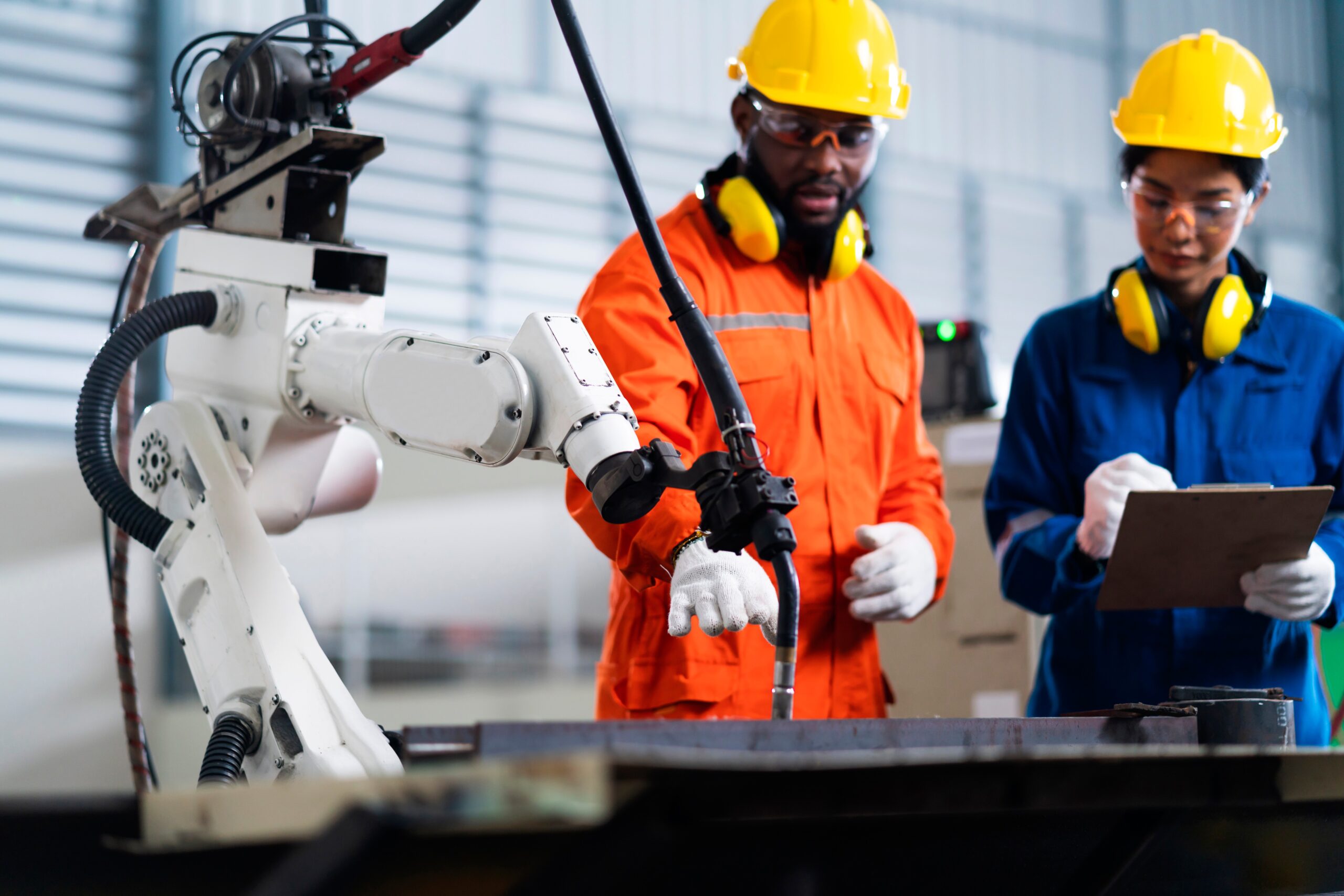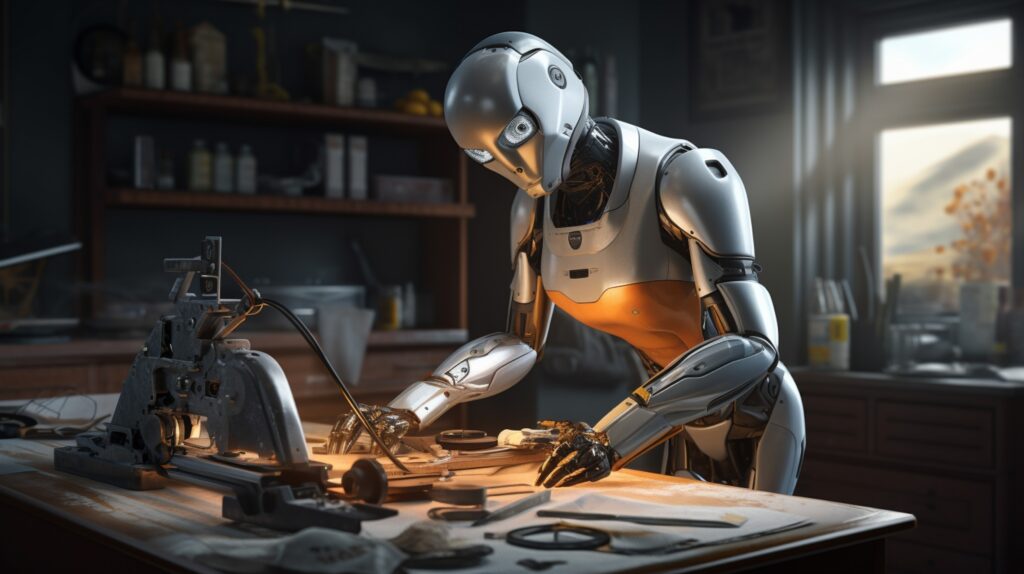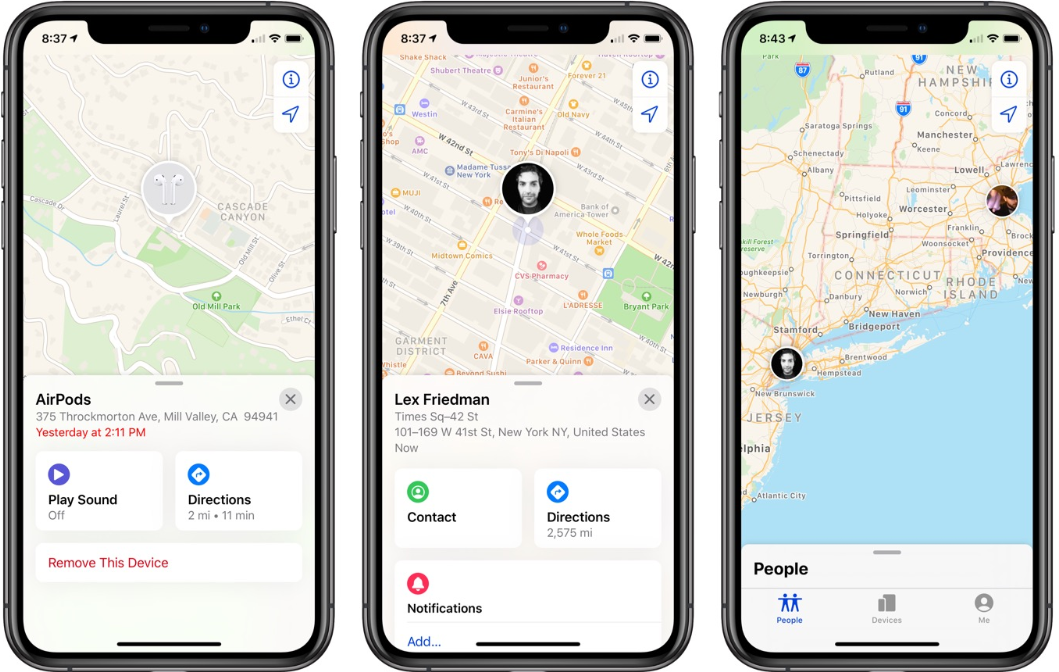Robots at Work: The Future of Jobs in the Age of Automation

INTRO
In today’s rapidly evolving technological world, robots and artificial intelligence (AI) are no longer just the stuff of science fiction. They’re becoming an essential part of how businesses function—especially in developed regions like the United States, Canada, and Western Europe. From factory floors to financial firms, automation is reshaping industries and redefining the future of work. But what does this mean for the global workforce?
What Is Automation and How Does It Work?
Automation refers to the use of technology—often driven by AI and robotics—to perform tasks that were traditionally done by humans. This includes:
- Industrial robots assembling cars
- AI-powered chatbots handling customer service
- Algorithms analyzing massive datasets in real-time
With the help of machine learning, natural language processing (NLP), and Robots at Work process automation (RPA), machines are learning to think, adapt, and even interact with humans in sophisticated ways.
Learn more about AI technologies at IBM’s AI page
Why Are Robots Taking Over Jobs?
The primary reasons behind the adoption of robots and automation in the workforce include:
- Increased efficiency and accuracy
- Lower operational costs
- 24/7 availability with no fatigue
- Enhanced productivity
For businesses, automation means faster turnaround times and reduced human error. For example, Amazon’s fulfillment centers in North America rely heavily on robotics to handle vast inventories with near-perfect precision.
How Is AI Impacting Different Industries?
1. Manufacturing
Industrial Robots at Work are the backbone of smart manufacturing. In the automotive industry, robots are used for welding, assembling, and painting vehicles with minimal human oversight.
2. Healthcare
AI and robotics in healthcare offer incredible potential:
- Surgical robots provide enhanced precision.
- Diagnostic AI tools can analyze X-rays and scans faster than radiologists.
Explore robotic surgery advances at Mayo Clinic
3. Finance
AI algorithms can:
- Detect fraud in real-time
- Execute stock trades within microseconds
- Generate financial reports with zero manual input
4. Agriculture
Autonomous tractors and AI-powered drones are revolutionizing farming practices in North America, enabling precision agriculture that increases yield and reduces waste.
What Jobs Are Most at Risk Due to Automation?
Research from McKinsey & Company suggests that nearly 30% of global work activities could be automated by 2030. Jobs most vulnerable include:
- Data entry clerks
- Telemarketers
- Assembly line workers
- Cashiers
- Drivers (due to self-driving vehicles)
Read McKinsey’s automation report here
Which Jobs Are Safe from Automation?
Not all jobs are at risk. Roles that require creativity, emotional intelligence, and complex problem-solving are much harder to automate:
- Teachers and educators
- Healthcare providers (e.g., nurses, therapists)
- Creative professionals (e.g., writers, designers)
- Skilled tradespeople (e.g., electricians, plumbers)
These roles require human judgment, empathy, and adaptability—traits that AI and robots still struggle to replicate.
How Can Workers Prepare for the Automation Revolution?

Here’s how individuals can stay ahead:
1. Upskilling and Reskilling
Investing in digital literacy, AI knowledge, and data analytics is essential. Online platforms like Coursera, edX, and LinkedIn Learning offer affordable courses.
Check out AI courses at Coursera
2. Embracing Lifelong Learning
The jobs of tomorrow don’t exist yet. Staying curious and continually learning new skills is a worker’s best asset.
3. Leveraging Human-Only Skills
Focus on areas where humans shine:
- Interpersonal communication
- Leadership
- Ethics and decision-making
What Role Should Governments and Policymakers Play?
To ensure a smooth transition, governments in the U.S., Canada, and Western countries must:
- Support workforce retraining programs
- Promote STEM education
- Introduce universal basic income (UBI) to mitigate job losses
- Implement AI ethics policies
Countries like Canada and Finland are already experimenting with UBI and government-sponsored AI training.
Can Automation Lead to Job Creation Instead of Elimination?
Absolutely! While automation may eliminate certain roles, it also creates new job categories such as:
- AI trainers
- Robot maintenance specialists
- Data analysts
- Ethical AI consultants
The World Economic Forum predicts that while 85 million jobs may be displaced, 97 million new roles could emerge by 2025, especially in tech-heavy economies.
Read the full report at World Economic Forum
What Are the Ethical Concerns Around Robots at Work?
Bias in AI Algorithms
AI can unintentionally reflect societal biases. For instance, if fed biased hiring data, a recruitment AI might favor one demographic over others.
Surveillance and Privacy
AI-driven workplace surveillance is on the rise. Tools that monitor productivity can cross ethical boundaries, infringing on worker privacy.
Job Inequality
Lower-income workers face a greater risk of displacement, leading to increased economic inequality across North America and Europe.
How Will AI Affect the Work-Life Balance?
Automation might free workers from repetitive tasks, potentially allowing for:
- More flexible schedules
- Reduced working hours
- Greater focus on strategic and creative tasks
However, the “always-on” culture driven by digital monitoring tools can also lead to burnout if not carefully managed.
Why Is Human Collaboration With Robots the Future?
Rather than a robot-versus-human scenario, the future lies in human-robot collaboration or “cobots.” These AI-enhanced machines work alongside humans to:
- Boost productivity
- Reduce workplace injuries
- Handle repetitive or dangerous tasks
Example: In logistics, collaborative robots assist warehouse workers with picking and packing, enhancing speed while reducing strain.
Conclusion: Is the Future of Work in Safe Hands?
The future of jobs in the age of automation isn’t about humans being replaced—it’s about humans being reinvented. With proactive steps, inclusive policies, and continuous learning, automation can empower us to work smarter, not harder.
But one thing is certain: the robots are here to stay. The key is to ensure they work with us, not against us.
Meta Description:
Explore how AI and robotics are reshaping jobs across industries in the US, Canada, and Western nations. Discover the risks, opportunities, and future-proof strategies in this SEO-optimized blog.
Top SEO Keywords Used in the Article:
- Robots at work
- AI and automation
- Future of jobs
- Automation in the US and Canada
- AI impact on jobs
- Human-robot collaboration
- Upskilling for automation
- AI ethics in the workplace
- Artificial intelligence trends
- Job displacement due to robots






